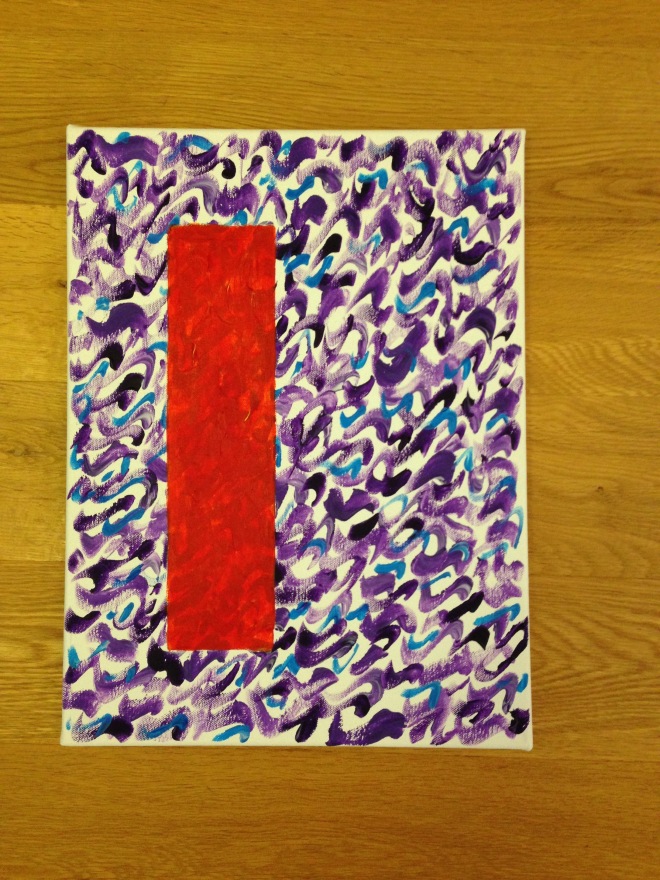I was recently invited to a friend’s party, and decided to paint an abstract piece of art for the host. I got in touch to find out her favourite colours, and after receiving the response, ‘purple and orange,’ I got to work. I decided to paint onto a 16 inch x 12 inch canvas, that’s a large surface as far as I’m concerned. Here’s phase one of the painting.
Next I added some orange. Ouch! What an awful clash.
I stared to get a bit lost after this. First I applied a layer of translucent white to the main body of the canvas, to tone down the background. That didn’t work so I then applied a thick layer of purple over the orange and scraped off the excess to reveal hints of the colour beneath. I like the effect but the overall composition still isn’t working. It was the night of the party and I had to leave an incomplete painting to one side – there was no way I was giving this to anyone in it’s current form!
The party was good fun. I returned to my work and things deteriorated.
I was lost, and in a mess. I was just about ready to give up, then I decided to take the solid block of colour back to basics. Out came the titanium white.
The intensity disappeared – and then Keira offered a suggestion, ‘how about blue?’ How about it indeed. I loosely mixed up some blue and some translucent white, which I then dragged the mixture over the titanium white in short, blocky strokes.
Finally! Several hours after I started – and with some valuable assistance, I got the painting somewhere I feel happy with. The recipient has seen a photograph and has approved, so it’s now signed and in the process of being delivered.
What have I learned? I tried too hard to work the two favourite colours into one piece – they weren’t getting along. I also learned that when using acrylic paint – you can salvage a disaster. Had I been making this in water colour – I expect I would have abandoned ship and settled on something else as a present long ago.









Watching Yvonne work on her pieces its clear that construction-deconstruction-reconstruction is a common and recurring process. Getting it right first time is an impossibly high bar, being brave enough to be open,, to explore, to experiment, keep what works and change what doesn’t….again and again…seems to be key.
Thanks for sharing as ever.
Thanks Kev – you make a great point. I often work in water colour which in my experience, when you make a mistake it’s rare to recover from. Often, work goes in the bin (I may photograph it first to record the learning). As I continue to explore acrylic, which I am discovering is a more forgiving medium, I hope to get more comfortable with this destroy to create practice.